25 Pemimpin yang Mengubah Manufaktur
Pada tahun 2021, Smart Manufacturing mulai bertanya kepada para pemimpin yang mengubah manufaktur tentang dampak pandemi virus corona terhadap bisnis mereka. Tidak hanya ceritanya yang terus memukau, kami juga melihat beberapa efek menetes dari COVID-19 muncul dalam jawaban mereka.
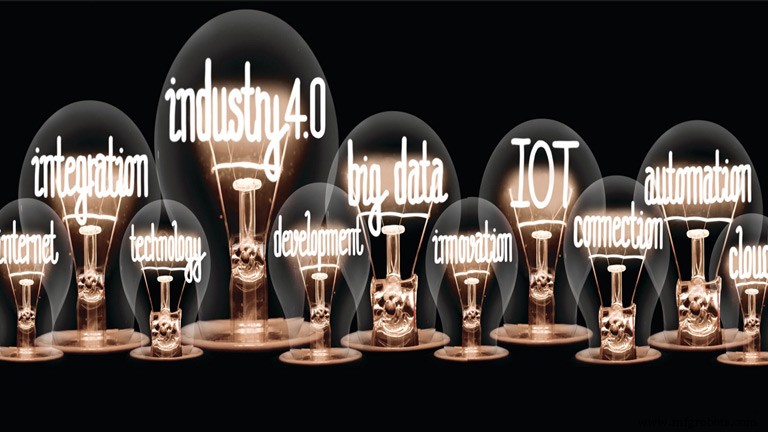
Dua responden mengatakan reshoring—membawa kembali manufaktur ke Amerika Serikat—sedang terjadi. Salah satunya adalah produsen kontrak elektronik Electro Soft Inc., yang pelanggannya meminta perusahaan Pittsburgh untuk memproduksi lebih banyak, dan yang lainnya ada di Amazon Web Services.
“Penopang dekat dan penopang kembali manufaktur adalah nyata dan momen bagi perusahaan untuk tidak hanya menerapkan 'yang dicoba dan benar,' tetapi untuk mengubah proses bisnis dan tumpukan teknologi mereka menjadi lebih gesit,” kata Douglas Bellin, manajer umum, pabrik pintar dan Industri 4.0, AWS.
Alasan utama untuk membalikkan offshoring, tentu saja, masalah rantai pasokan. Dan katalis untuk masalah tersebut adalah pandemi, dari mana kisah-kisah menakjubkan terus muncul.
Misalnya, tim di Fasilitas Teknologi Serat Karbon Laboratorium Nasional Oak Ridge menemukan cara memproduksi media N-95 untuk masker wajah, dan kemudian mentransfer teknologi itu ke mitra industri yang membuat filter diesel. Kolaborasi mereka memungkinkan produksi lebih dari 3 juta masker sehari.
Lebih dari dua tahun dalam pandemi, perusahaan dari semua ukuran, startup, kemitraan publik-swasta, dan universitas terus menghasilkan ide-ide baru dan produk inovatif bersama dengan bahan pokok yang kami andalkan, menciptakan peluang untuk kepemimpinan yang ditunjukkan di halaman berikutnya muncul.
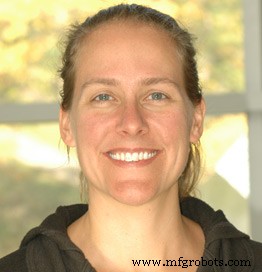
Kira Barton, Ph.D.
Profesor Asosiasi, Universitas Michigan (U-M)
Daya tarik manufaktur pintar (SM) untuk Barton diperparah oleh kelemahan industri yang terungkap selama pandemi. “Pandemi telah memberikan contoh yang belum pernah terjadi sebelumnya tentang perlunya peningkatan kelincahan dan pengambilan keputusan yang cerdas di sektor manufaktur, termasuk rantai pasokan,” katanya. “Ini telah mendorong inisiatif penelitian tambahan dan peluang pendanaan dalam domain ini, serta kolaborasi industri yang kuat.” Barton dan timnya di UM menciptakan kerangka kerja digital twin (DT) berbasis persyaratan yang mendefinisikan spesifikasi yang diperlukan untuk memungkinkan DT dapat digunakan kembali, interoperabilitas, pertukaran, pemeliharaan, ekstensibilitas, dan otonomi di berbagai aplikasi. “Saya pikir pengembangan … kerangka kerja, serta demonstrasi dan implementasi kerangka kerja ini pada berbagai masalah yang relevan dengan industri adalah pencapaian terbesar kami,” katanya. “Kami ingin terus menjadi pemimpin di bidang ini.” Dan iming-iming SM? “Manufaktur pintar menyatukan konsep dari robotika, kecerdasan buatan, dan sistem fisik siber untuk memanfaatkan informasi untuk pengambilan keputusan yang lebih cerdas dalam industri manufaktur,” kata Barton. “Ini memberikan kesempatan unik untuk bekerja di beberapa domain pada masalah yang penting secara sosial.”
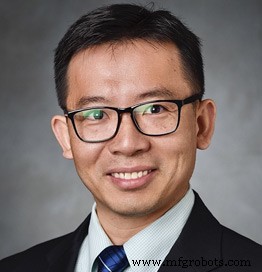
Hui Yang, Ph.D.
Profesor, Universitas Negeri Pennsylvania
Laboratorium penelitian Yang berfokus pada desain dan pengembangan teknologi "penginderaan-pemodelan-optimasi" baru untuk menyelidiki dinamika stokastik nonlinier di bidang manufaktur untuk peningkatan kualitas. Di antara pekerjaan terbaru mereka, Yang dan tim penelitinya merancang metode privasi diferensial baru untuk mengaktifkan perlindungan otomatis untuk data sensitif dengan menambahkan "gangguan" untuk mencegah calon peretas; memanfaatkan generasi baru IoT dan komputasi terdistribusi untuk mengembangkan model jaringan baru menggunakan pendekatan stokastik untuk pemrosesan informasi mesin dan pemantauan kondisi; dan merancang metode Six Sigma baru untuk kontrol kualitas manufaktur aditif. “Seperti sebuah ekosistem, kami memiliki orang-orang yang bekerja dalam upaya terisolasi di berbagai bidang manufaktur aditif, dan insinyur sistem dapat membantu menghubungkan titik-titik untuk menyediakan kerangka kerja untuk manajemen kualitas,” kata Yang. “Kualitas sangat diperlukan, dan jika kami merancang kerangka kerja tingkat sistem manajemen kualitas sejak awal, maka kami memiliki kualitas yang lebih tinggi dan produktivitas yang lebih baik dengan biaya yang lebih rendah. Pada akhirnya, semua orang ingin melakukan manufaktur high-end dengan presisi tinggi, tetapi jika kualitas menurun pada setiap langkah selama produksi, Anda kehilangan keunggulan kompetitif yang dibutuhkan untuk pasar global.”
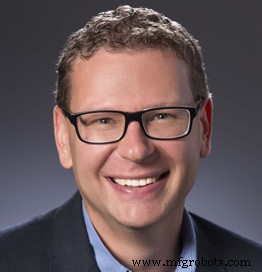
Eric M. Johnson, Ph.D.
Manajer Senior, Lab Penelitian Manufaktur Aditif,
Eaton Corporation
Sebelum masuk ke manufaktur aditif, Johnson menghabiskan karirnya bekerja pada bagaimana manufaktur berdampak pada bahan dan pada akhirnya daya tahan produk. “Kemudian pada tahun 2013, majikan saya saat itu memutuskan untuk membeli printer 3D logam,” katanya. “Sebagai seorang ahli metalurgi, saya tidak bisa melewatkan kesempatan untuk mengerjakan teknologi yang begitu keren. Begitu saya mulai bekerja di lapangan, mata saya terbuka pada peluang yang dapat dibawa oleh manufaktur aditif (AM) ke dalam desain, manufaktur, dan rantai pasokan.” Dia bergabung dengan komunitas AM, membangun hubungan dan belajar lebih banyak tentang pencetakan 3D. “Saya berutang banyak kepada komunitas AM yang lebih besar untuk teknologi luar biasa yang telah dikembangkan dan ide-ide fantastis yang telah mengilhami para pengadopsi manufaktur aditif seperti saya,” katanya. Johnson juga terinspirasi oleh penggunaan AM yang sepenuh hati dari Eaton dan dedikasi timnya yang membantu mewujudkan produksi suku cadang kedirgantaraan AM dalam waktu singkat. “Saya percaya kita dapat mengubah cara manufaktur dilakukan dan ini adalah tujuan saya untuk masa depan!” katanya.

Douglas Bellin
Manajer Umum, Pabrik Cerdas dan Industri 4.0,
Layanan Web Amazon
Dalam perannya untuk mengawasi strategi dan peta jalan keseluruhan untuk Amazon Web Services for Industry, Bellin memiliki kursi terdepan untuk melihat tren di seluruh manufaktur. Salah satu tren yang dilihatnya adalah laju perubahan yang cepat. “Kami berada pada titik belok kritis di pasar dan percepatan perubahan meningkat.” dia berkata. “Di masa lalu, pasar akan melihat perubahan dalam rentang waktu 10-20 tahun. Sekarang, kami melihat perubahan dan peningkatan pasar yang terjadi dalam waktu kurang dari lima tahun atau lebih cepat.” Selain itu, banyak teknologi yang terkait dengan Industri 4.0, seperti pemantauan dan operasi jarak jauh, manufaktur koreksi diri, A.I. dan pembelajaran mesin, Bellin sekarang melihatnya sebagai hal yang harus dimiliki. Sabuk hijau Six Sigma ini, yang memulai karirnya dengan mengerjakan setiap pekerjaan di pabrik baja, juga melihat peluang dalam kekusutan rantai pasokan terkait pandemi. “Hubungan shoring dan re-shoring manufaktur adalah nyata dan momen bagi perusahaan untuk tidak hanya menerapkan 'yang dicoba dan benar,' tetapi untuk mengubah proses bisnis dan tumpukan teknologi mereka menjadi lebih gesit," katanya.
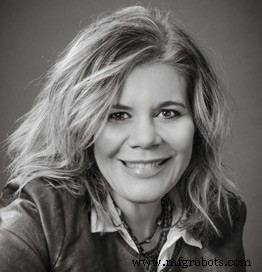
Jennifer Tisdale
CEO, GRIMM
Tisdale adalah ahli strategi ekonomi siber yang terkenal karena membangun program dan strategi keamanan siber untuk industri, pemerintah, dan akademisi. Area fokus perusahaannya meliputi keamanan sistem siber-fisik di mana perangkat keras dan perangkat lunak bertemu, jaringan, pengujian keamanan aplikasi, pelatihan dan konsultasi. Keahliannya terkonsentrasi pada keamanan sistem dan teknologi siber-fisik yang terhubung, termasuk Industrial Internet of Things, infrastruktur penting, dan mobilitas transportasi tingkat lanjut. Tisdale memiliki perpaduan unik dari pengalaman dalam industri pertahanan, otomotif, manufaktur, dan teknologi. Dia sebelumnya adalah manajer program mobilitas siber untuk Michigan Economic Development Corporation (MEDC). Di MEDC, Tisdale bertanggung jawab untuk mendukung industri otomotif dan pertahanan dengan menggabungkan mobilitas pintar dan keamanan siber untuk memajukan pengembangan kendaraan yang terhubung dan otonom. “Teknologi memperkenalkan banyak manfaat untuk manufaktur tetapi juga risiko keamanan,” katanya. “Saya terinspirasi untuk mengadvokasi dan mendidik tentang pentingnya praktik keamanan siber yang baik bagi produsen kami untuk membantu melindungi bisnis dan kualitas produk mereka. Saya juga ingin memastikan setiap produsen memahami bahwa ada sumber daya yang tersedia untuk meningkatkan postur keamanan siber mereka.”
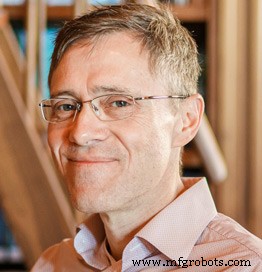
Thomas Bollenbach, Ph.D.
Chief Technology Officer,
Advanced Regenerative Manufacturing Institute (ARMI)
Bollenbach memimpin upaya di antara anggota BioFabUSA, program ARMI, untuk menggunakan manufaktur cerdas untuk fabrikasi sel, jaringan, dan organ. Di antara pencapaian mereka adalah platform manufaktur SMAC (scalable, modular, otomatis dan tertutup) dan Pusat Karakterisasi Jaringan Dalam. Mereka juga mengembangkan real-time, platform berbasis sensor dan analitik data untuk kontrol kualitas dalam proses dan produk akhir untuk mengatasi rintangan yang ditimbulkan ketika prinsip-prinsip manufaktur cerdas tidak diterapkan. “SMAC dan karakterisasi yang mendalam akan memungkinkan manufaktur kualitas-demi-desain, yang penting untuk konsep jaringan dan organ manufaktur yang telah berusia puluhan tahun menjadi layak secara ekonomi,” kata Bollenbach. Di masa depan, ia melihat peningkatan kemampuan industri biofabrikasi untuk memantau dan mengontrol manufaktur melalui akuisisi dan pemrosesan data real-time yang memanfaatkan alat seperti A.I. “Saya melihat ini mengarah pada pergeseran dari praktik kontrol kualitas yang saat ini dilakukan di lab, menggunakan alat tradisional ahli kimia analitik, ke teknisi yang memantau output sensor,” kata Bollenbach. “Ini juga akan mengarah pada perubahan cara badan pengatur seperti FDA meninjau dan menyetujui proses manufaktur yang disajikan kepada mereka.”

Akhila Tadinada
Chief Technology Officer, Xemelgo Inc.
Tidak ada yang memberi Tadinada kesenangan yang lebih besar daripada membuat perangkat lunak untuk produsen. "Produsen adalah pembangun sejati ekonomi kita," katanya. Dia dan seorang rekan di mantan perusahaannya mendirikan startup Seattle pada tahun 2018 untuk menawarkan aplikasi turnkey Industry 4.0 untuk melacak bahan mentah, pekerjaan dalam proses, aset, pengiriman, dan barang jadi. “Asisten digital Xemelgo memastikan bahwa pabrikan dapat fokus menyelesaikan pekerjaan sementara perangkat lunak Xemelgo bekerja di latar belakang untuk memastikan semuanya berjalan sesuai rencana,” katanya. Sebagai inspirasi, Tadinada melihat karir ayahnya di salah satu perusahaan manufaktur peralatan pembangkit listrik terbesar di India, di mana dia mengunjungi sebagai seorang gadis, dan ke Amazon. “Amazon dimulai dengan situs web kecil yang menjual buku 30 tahun yang lalu dan akhirnya membayangkan kembali setiap aspek operasi ritel,” katanya. “Kami percaya manufaktur sedang memulai perjalanan serupa. Saat kami mendapatkan setiap aspek manufaktur yang terhubung dan data real-time mengalir, produsen akan dapat membuat produk yang sangat disesuaikan pada saat itu juga dan melayani permintaan pelanggan akhir mereka tidak seperti sebelumnya.”
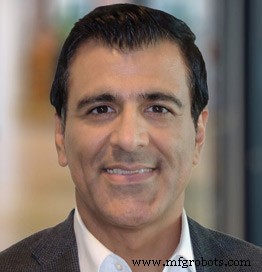
Sachin Lulla
Pemimpin Sektor Konsultasi Amerika,
Manufaktur dan Mobilitas Lanjutan, EY
Misi di EY, sebelumnya dikenal sebagai Ernst &Young, adalah untuk menciptakan dunia kerja yang lebih baik. Transformasi manufaktur secara khusus merupakan inti dari misi Lulla dalam perannya sebagai pemimpin konsultasi manufaktur. “Pencapaian terbesar kami adalah peluncuran EY-Nottingham Spirk Innovation Hub kami di Cleveland untuk memamerkan masa depan manufaktur cerdas dan transformasi digital bagi klien kami,” katanya. “Kami memiliki misi untuk bermitra dengan setiap perusahaan manufaktur untuk mengubah produk, pengalaman pelanggan, dan ketahanan operasional mereka dengan teknologi digital bersama dengan mitra ekosistem kami di pusat inovasi kami.” EY juga menciptakan pendekatan holistik untuk mengubah perusahaan manufaktur dengan metodologi yang disebut Transformation Realized yang mengambil pendekatan yang berpusat pada manusia untuk menerapkan “technology@speed” dan “innovation@scale,” katanya. Dua puluh tahun lebih konsultasi dengan OEM manufaktur mobil dan terinspirasi sebagai seorang anak oleh ayahnya, yang mendirikan perusahaan manufaktur pakaian yang sukses, jelas memainkan peran kunci dalam hidupnya. “Itu ada dalam DNA saya,” kata Lulla tentang perjalanannya membentuk masa depan manufaktur.
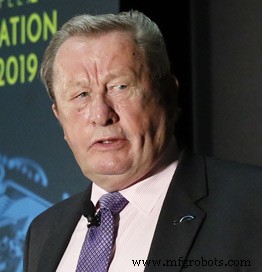
Malcolm J. Thompson, Ph.D.
Direktur Eksekutif, NextFlex
NextFlex, sebuah institut Manufaktur USA, menciptakan jenis elektronik baru berdasarkan sirkuit tercetak yang mengintegrasikan chip elektronik tipis dan fleksibel serta interkoneksi tercetak yang memungkinkan waktu pemasaran yang cepat, berbiaya rendah, dan dibuat melalui proses manufaktur yang ramah lingkungan . “Kami menjalin kemitraan dengan anggota konsorsium untuk memecahkan masalah secara kolaboratif sambil juga membangun organisasi rekayasa dan manufaktur di dalam NextFlex,” kata Thompson. “Dua pencapaian ini telah mendorong peningkatan terukur dalam tingkat fungsionalitas dan kematangan FHE (elektronik hybrid fleksibel).” Thompson ingin menyambut lebih banyak anggota NextFlex, yang saat ini berjumlah lebih dari 100 orang, untuk mencakup rantai pasokan yang lebih luas dan memperluas jumlah mitra manufakturnya saat institut bekerja untuk memajukan adopsi elektronik, komersialisasi, dan aplikasi aditif hibrid secara luas. Penting untuk pekerjaan NextFlex adalah penggunaan manufaktur cerdas. “Kami telah menerapkan beberapa metode pencetakan/proses aditif untuk mengurangi biaya dan kerumitan dalam manufaktur,” katanya. “Dalam hal perakitan elektronik, kami menggunakan perekat non-solder flip chip die bersuhu rendah agar kompatibel dengan material bersuhu rendah.”
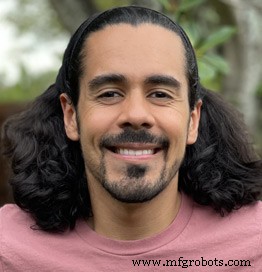
Jay Flores
Pendiri, Ciptakan Perubahan LLC
Flores menggabungkan pengetahuan teknisnya dengan hiburan untuk melakukan penjangkauan STEM kepada anak-anak. Dia memiliki gelar teknik mesin, dan merupakan mantan Duta Global STEM untuk Rockwell Automation. Dia juga bekerja dengan FIRST. Proyek kewirausahaan Flores termasuk mendirikan Invent the Change LLC, sebuah organisasi yang mempromosikan STEM. Selama pandemi, ketika sebagian besar kegiatan dan sekolah ditutup, ia membuat acara di saluran YouTube-nya, “Ini Bukan Sihir, Ini Sains.” Pertunjukan ini menggunakan aspek hiburan sulap, dan eksperimen sains yang disamarkan sebagai trik sulap, untuk meningkatkan kesadaran dan kegembiraan tentang STEM. “Setiap eksperimen sama menghiburnya dengan mendidik dan menyenangkan untuk segala usia,” katanya. Dalam perannya sebagai Mystery Science Guide pada Tim Mystery Science Discovery Education, Flores memupuk rasa ingin tahu dengan menjawab pertanyaan-pertanyaan yang diajukan oleh siswa seperti, “Bagaimana batu bata LEGO ditemukan?” dan “Mengapa orang tidak jatuh dari roller coaster ketika mereka terbalik?” Jay is also the host of the innovation competition television show “Make48,” which is filmed for PBS and reaches 96 percent of U.S. households.
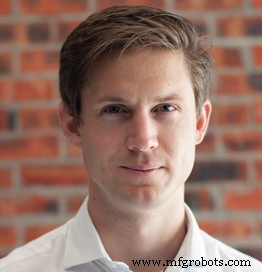
Frans Cronje
Co-founder and CEO, DataProphet (Pty.) Ltd.
When Cronje thinks of the future of smart manufacturing, he sees a pan-operational, self-optimizing ecosystem powered by A.I. but with people at the center. In the plant of the future, humans are empowered to improve their digital skills continuously. This will be necessary as they interface with increasingly smart machines that make new products and components with increasingly advanced materials. “Future manufacturing will also capture value with different metrics such as social and environmental benefit, cross-disciplinary collaboration and scalability of digital capabilities,” he said. Cronje established DataProphet in 2014 when he turned a consultancy into a company. Since then, he and his team of data engineers and data scientists have consistently helped customers reduce manufacturing defects by an average of 40 percent. Some of those customers have even, through DataProphet’s PRESCRIBE solution, achieved zero defects. Cronje’s efforts led to an invitation to join the World Economic Forum’s Global Innovators Community, made up of the world’s most promising startups, and a request to speak at the Annual Meeting of the New Champions, aka the “Summer Davos.”
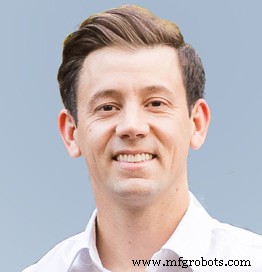
Daniel Burseth
Vice President of Engineering, Eckhart
Eckhart combined a collaborative robot, machine vision and an autonomous mobile robot to make a fully automated, end-of-line inspection system. The system can identify incorrectly placed product decals, bad electrical connections and missing components for a commercial vehicle OEM. “Historically, manufacturers staff many people in inspection roles in which they are armed with a checklist on a clipboard and some basic training,” he said. “Humans are not great at repetitive inspection tasks and quality judgements vary significantly from one operator to the next. Despite best efforts to review quality, many companies end up shipping bad product out the door.” Automation inspection is in high demand as products increase in complexity and skilled labor becomes increasingly scarce. In addition to inspection and testing automation, Eckhart continues to see double digit growth in more traditional factory automation areas including sanding and grinding, machine tending, and the lifting and transport of heavy loads. “Automation is fundamentally about alleviating people from the most dull, dirty and dangerous activities in the factory,” said Burseth. “We take pride in the opportunity to make U.S. factories more desirable places to work.”
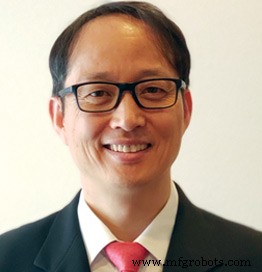
Martin Jun, Ph.D.
Associate Professor, Purdue University; CEO &Co-Founder, Maijker Corp.
Jun co-founded (with fellow honoree Chandra Nath, Ph.D.) Maijker Corp. to commercialize a sound sensor Jun developed to help understand a machine tool’s operation status, condition, process anomalies, health and more, much like the legendary factory worker who could tell by the way a machine sounds if it’s working correctly. He likens the contact-based, internal sensor to a stethoscope to detect each machine’s unique sequence of sounds that can be considered as speech and interpreted. Jun has also developed an immersive and interactive cyber-physical system (I2CPS) framework, which is based on the similarities of smart manufacturing architectures while emphasizing collaboration between humans and autonomy. In general, the autonomy modules are in cyberspace, and humans utilize them from applications. “Especially in the I2CPS framework, human cognition can be substituted for artificial intelligence,” Jun said. “The autonomy can control manufacturing systems instead of humans, and both humans and autonomy share the work of data analysis and association.” Through the work in his lab, Jun hopes to help small and medium-size manufacturers survive and thrive, goals made even harder to achieve during the pandemic, he said.
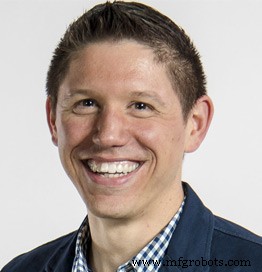
Thomas Hedberg Jr., Ph.D.
Mission Director, Acquisition and Industrial Security, Applied Research Laboratory for Intelligence and Security, University of Maryland
After 15 years working to develop standards and digital capabilities for model-based enterprise (MBE), digital thread and digital twin, Hedberg was recruited to build and lead a research team at the University of Maryland to study how to scale smart-manufacturing capabilities to entire supply chains. “We tell a joke that we started working on supply chain resiliency in early March 2020 when you could count on one hand the number of researchers focused on the topic,” he said. “Then fast forward to mid-March 2020 and the entire world was focused on supply chains.” Prior to the university, Hedberg worked at NIST, where he co-developed the NIST Smart Manufacturing Systems Test Bed that’s used by leading software companies to develop and test their products. The project earned him and his team a U.S. Department of Commerce Gold Medal, the highest honor given by the Secretary of Commerce for “distinguished and exceptional performance,” according to a government website. Hedberg was also instrumental in the creation of the American Society of Mechanical Engineers’ MBE Framework, whose first standard was published in March 2022.
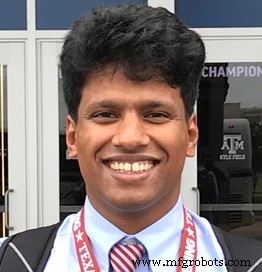
Chandra Nath, Ph.D.
Chief Technology Officer &Co-Founder, Maijker Corp.
When he worked at Hitachi America Ltd., Nath invented a novel signal acquisition method for online monitoring of manufacturing processes and tool condition. A patent has been published. More recently, with fellow honoree Martin Jun, Ph.D., and John J. Murphy, Nath started Maijker Corp. to commercialize an A.I.-based, non-invasive, simple and flexible plug-and-play machine monitoring system that uses a sound sensor that originated in Jun’s lab. Maijker received awards, with Nath as the principal investigator, from the National Science Foundation Seed Fund and Elevate Ventures Inc., Indianapolis, to continue the R&D and commercialization work for the system. Maijker began just as the pandemic started. Despite some COVID-induced initial delays in scheduling industry testing and adoption, the co-founders have been fortunate to sell a software product and already have the initial version of their machine monitoring system in use within their partners’ factories. One of the partners was so successful using the system he wants to deploy it more widely in his factory and offered to compensate the company, a phenomenon Nath deemed “a huge success.”
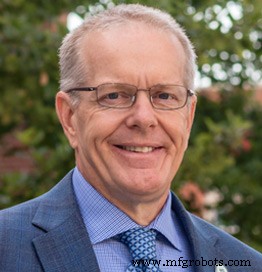
Craig Blue, Ph.D.
Director, Advanced Manufacturing Program, Oak Ridge National Laboratory
During a 25-year career in materials and manufacturing technologies R&D, Blue has amassed patents, publications and awards. But one of his proudest moments was seeing ORNL’s experts in manufacturing and materials, coupled with its facilities and capabilities, help out in the pandemic. He and his team transformed the Carbon Fiber Technology Facility at ORNL to produce N-95 media for face masks, and then transferred that technology to an industrial partner that makes diesel filters to enable the supply chain and production of over 3 million masks a day. They also used the digital thread—a technology Blue’s passionate about—to rapidly produce tooling for face masks and test tubes. In fact, ORNL’s Manufacturing Demonstration Facility, of which Blue was founding director, drove the creation and adoption of the digital framework and data analytics for manufacturing processes. “The digital thread is key to implementing advanced manufacturing and taking American manufacturing to the next level,” he said. “The technology enables companies to fully understand and control their transient manufacturing processes—to ensure part properties and reproduce identical parts time and again.”
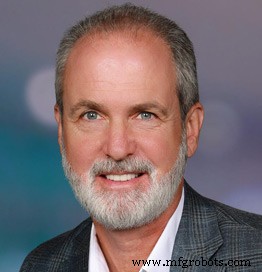
Matthew Cordner
Principal A&D Business Architect, HCL Technologies Inc.
After spending three decades designing, building and supporting vertical-lift aircraft, Cordner is applying his lessons learned to IT. “An aircraft is a complex system of carefully integrated systems, with trade-offs made in each to achieve the desired performance,” he said. “IT architecture is also a ‘system of systems’ designed for higher objectives.” Among the most critical objective is agility—the ability to rapidly sense and respond to daily changes in engineering, the factory and the supply chain, he said. “Billions have been invested in IT tools, yet few companies have integrated them with this overall objective in mind,” said Cordner. “This requires that PLM and ERP systems more effectively integrate to each other and the shop floor. At HCL, we call this Model Based Enterprise 2.0. We see renewed focus on ERP’s role in ensuring supply chain agility and resiliency. Modern ERPs such as SAP’s S/4HANA have been designed to be faster, less complex, more user friendly while providing far more capability than legacy tools.” He offers a gentle reminder:“Remember, the ultimate goal is to optimize your enterprise, not your applications.”
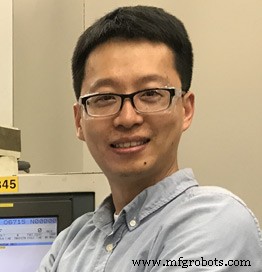
Yujie Chen, Ph.D.
Engineer, Digital Manufacturing and Machining,
Caterpillar Inc.
Chen started his career in manufacturing with Caterpillar in 2013, and has been working in advanced manufacturing-related areas ever since. His work involves developing and implementing manufacturing process modeling, and data exchange and analysis between manufacturing processes. “This is intended to automate the manufacturing process to ensure agility and resiliency,” he said. “For example, a robot can assist in scanning incoming material for variations, and then our advanced manufacturing systems can adjust to these variations more intelligently.” Through MxD, the digital manufacturing institute within Manufacturing USA, he led a team of more than 20 people from academia and industry in a funded project, according to a 2019 article in Peoria Magazine when it named him among 40 Leaders Under 40. COVID-19 illuminated the importance of smart manufacturing, he said. “With smart manufacturing, the manufacturing process status can be monitored, product quality can be predicted and design can be virtually validated,” said Chen. “Some people may be physically far away from manufacturing lines, but they can have even better insight and control of manufacturing with smart manufacturing technologies.”
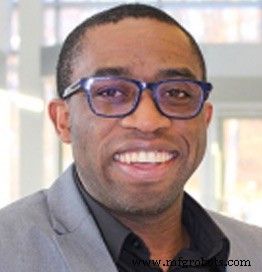
Chinedum “Chi” Okwudire, Ph.D.
Founder and CTO, Ulendo; Associate Professor, Mechanical Engineering, University of Michigan
Okwudire and his colleagues have created new algorithms that leverage control theory, advanced modeling and sensing, and machine learning to boost the speed and precision of desktop and industrial-grade 3D printers at low cost. Manufacturers requested their FBS vibration compensation algorithm to help them speed up their 3D printers to meet the spike in demand brought about by the SARS-CoV-2 pandemic, but it wasn’t ready for commercial distribution at that time. “We were really inspired by the requests,” he said. In the meantime, the team is deploying their solutions on commercial printers. “It’s great to see our solutions leave the research lab and find success in the field,” said Okwudire. “We have lots more smart manufacturing solutions in development—like our SmartScan algorithm for laser-based 3D printing of metals—that we are excited to bring to the 3D printing industry and beyond.” His company’s name, Ulendo, means “journey” or “voyage” in the Chichewa language. The company’s team is on a journey “to use software to enable manufacturing machines to achieve their full potential as ubiquitous tools for modern manufacturing,” according to the company website.
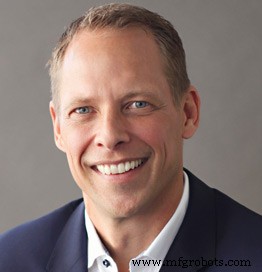
Johan Bjorklund
CEO, Betacom
When Bjorklund became CEO at Betacom in 2019, his vision was for the future. Could Betacom’s wireless infrastructure for mobile operators be at the crossroads of Industry 4.0? He convened wireless industry leaders in finance, engineering, security, product management, sales and marketing to start a new business unit and a new Betacom service—Betacom 5G as a Service (5GaaS)—what the company calls the industry’s first fully managed private wireless service. “We developed a turnkey service, backed by a modern network operations center that manages security in addition to network operations,” he said. Prior to joining the team that acquired Betacom, Bjorklund co-founded and is chairman of the board of a passion project, software company Aiberry. Its software uses A.I. to analyze a person’s words, voice and facial expressions during a short, guided conversation to deliver critical insights to medical providers to help them diagnose and treat mental health disorders. “In a time where mental well-being is more important than ever, Aiberry is increasing access to care, enhancing early detection and enabling healthcare providers,” he said.
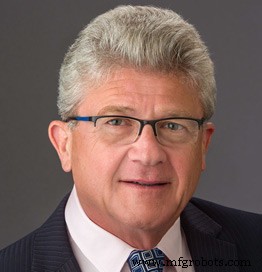
Sam Golan
Founder &CEO, High QA Inc.
In his 25 years of hands-on management experience in CAD/CAM and PLM, it became clear to Golan that smart manufacturing is relatively in a good place and moving in the right direction to address Industry 4.0 challenges. “What is dramatically behind, however, is the quality for manufacturing,” he said. In Golan’s view, quality for manufacturing is decades behind and is a huge bottleneck associated with high cost. Manufacturing automation is highly advanced compared to quality for manufacturing, with the gap growing daily, he said. “Quality can’t keep up with the pace,” said Golan. “Parts are getting smaller, (are) highly accurate with tighter tolerances and are accompanied by huge documentation submissions.” Golan built High QA’s solution by integrating quality and manufacturing from the beginning—2D drawing or 3D model. It has been adopted by close to 1,000 customers, ranging from OEMs to all supply chain levels. Golan’s not stopping there. “Our next achievement begins with a new product launch that enables the supply chain to become an integral part of the manufacturing quality process,” he said.
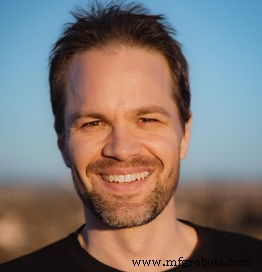
Paul Van Metre
Co-Founder &CRO, ProShop ERP
Van Metre and his partners created ProShop ERP, a paperless, digital manufacturing ecosystem, so they could run their former CNC machine shop using smart tools and processes. When other companies “were very interested” in what they had built, the partners sold the shop they had run for 17 years so they could focus their efforts on the software. “Our team at ProShop has helped bring life-changing impact to hundreds of manufacturing companies, helping clients significantly scale much faster than they could otherwise, reduce costs, increase throughput, improve their bottom lines, create more jobs and improve their communities,” he said. “We believe this is very important work to support this industry and the overall economy.” Industry apparently likes what Van Metre, Matthew Carrico and Kelsey Heikoop created. “The pandemic has led to tremendous growth at ProShop, and we’ve more than doubled our team and client base,” Van Metre said. “Most manufacturing companies have realized they must adopt smart tools to help run their businesses, and that paper documents and legacy software systems won’t allow them to compete at the level needed today.”
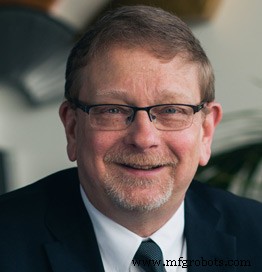
Karla Trotman
President &CEO, Electro Soft Inc.
When the pandemic interrupted industry supply chains, domestic manufacturers moved to strengthen the pipelines by reversing offshoring. “Companies are now realizing that a global supply chain only works if all elements are perfect,” said Trotman. “But what happens when conditions are not perfect? Revenue suffers. Companies are not willing to take that risk, so reshoring is happening at a larger scale and our customers are now asking us to take on larger volumes of work.” There’s a glitch, though, with a shortage of qualified workers. Trotman and other manufacturers in her region of Pennsylvania found their own solution to the issue by banding together 15 years ago and creating the Southeastern Pennsylvania Manufacturing Alliance (SEPMA). Trotman is co-chair. The SEPMA established a boot camp and career pathway to prepare entry-level workers “who at least have a foundation in manufacturing when they walk in the door” for its employer partners. Hundreds of boot camp graduates have been hired. Since starting in 2007, SEPMA has provided technical training to thousands of people and exposed hundreds of middle and high schoolers to manufacturing careers.

David Vasko
Senior Director, Advanced Technology, Rockwell Automation
You might want to call Vasko a pioneer in autonomous control. “Decades ago, I was able to demonstrate autonomous control by applying physical simulation in conjunction with A.I. to create a living replica of a factory, what today is commonly called a digital twin,” he said about one of three critical developments in smart manufacturing to which he contributed. The other two? He was one of the architects who innovated the transition from PLCs to general purpose automation controllers leveraging industrial networks; and he was an architect for functional safety, which enabled the use of easier-to-apply safety controllers and networks to replace difficult-to-use relays. Vasko, who holds more than 75 patents for smart manufacturing innovations, says, “We see the dream we had 20 years ago—to create intelligent, interconnected manufacturing—coming to life each day. I only see this expanding in the future with enhanced supply chain flexibility and resiliency, increased availability of experts as extended reality and A.I./machine learning become easier to use and explain, and a safer, more skilled workforce that leverages the technology to produce in a more efficient, greener way.”
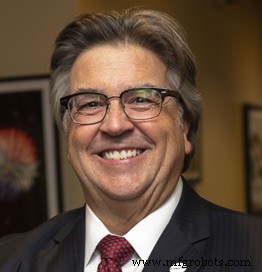
Howard D. Grimes, Ph.D.
CEO, Cybersecurity Manufacturing Innovation Institute (CyManII)
Grimes is helping secure manufacturing operations and supply chain networks, the biggest, most complex targets for cybercriminals. Established in 2020 by The University of Texas at San Antonio, where Grimes is also the associate vice president for institutional initiatives, CyManII has developed early instantiations of a smart manufacturing architecture (SMA) that overlays onto both smart and legacy systems. CyManII has also started to successfully demonstrate how this architecture improves productivity and shrinks the cyber attack surface area. It has also introduced a novel modeling and simulation approach called “CEEQ,” or Cybersecurity Energy Emissions Quantification. “CEEQ allows us to validate and verify the energy efficiency gains and reductions in emissions, and quantitate the extent of cyber hardening achieved via SMA,” he said. As CyManII cyber secures domestic manufacturing Grimes sees, “a smart manufacturing environment that is not subject to theft of IP, where supply chains are resilient and secure and manufacturing sectors become significantly less vulnerable to advanced persistent threats and acts of sabotage by our adversaries. All of this leads to the U.S. being globally competitive.”




























